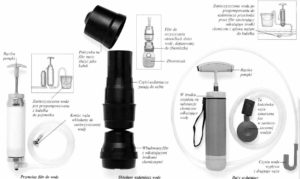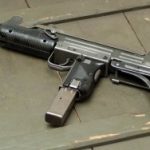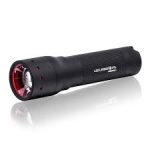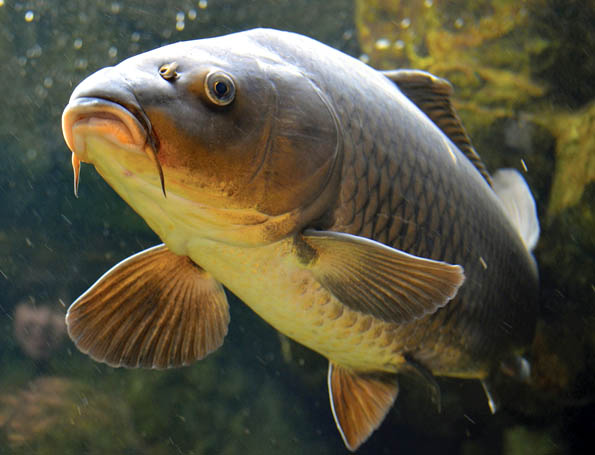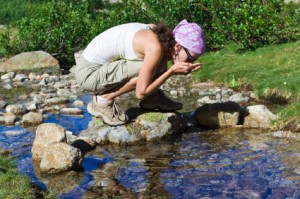Małe łódki zależnie od rodzaju mają różne zalety i wady. Przeznaczone są zwykle do pływania w określonych warunkach. Dlatego nie powinno się z nich korzystać w warunkach, do których nie są przystosowane. Niektóre łódki, takie jak tradycyjny coracle, nadają się wyłącznie na spokojne, wolno płynące wody, inne – jak nowoczesne pontony, mogą być używane w warunkach, w których większość łódek okazałaby się bezużyteczna.
Łódź z silnikiem
Płaskodenna łódka napędzana silnikiem znakomicie nadaje się do pływania szerokimi, niezbyt rwącymi rzekami. Taką łódką można przebywać duże odległości.
Silnik umieszczony za burtą obciąża rufę. Dlatego gdy śruba zatopiona jest w wodzie, a łódka długa i wąska, na dziobie musi znajdować się balast dla równowagi.
Silnik zmniejsza nieco wyporność łódki.
Pontony
Nowoczesne pontony doskonale sprawdzają się nawet w trudnych morskich warunkach. Chętnie korzystają z nich badacze i podróżnicy. Pontony zachowują sterowność nawet na burzliwym morzu, zalewane przez fale. Jednak pływający po powierzchni lód oraz inne przeszkody mogą przedziurawić komory pławne pontonu. Płynąc pontonem napędzanym silnikiem trzeba obciążyć jego dziób, żeby nie unosił się zbyt wysoko, gdyż grozi to wywrotką, zwłaszcza przy obijaniu się o fale.
Coracle
Tę łódkę trzeba umieć zrobić; składa się z ramy z wikliny splecionej w półkolistą misę i naciągniętej na nią skóry zwierzęcej lub brezentu. Łódka tego typu nadaje się do pływania jedynie po bardzo spokojnych akwenach, osłoniętych od wiatru.
Kajak
Tradycyjny eskimoski kajak okazał się najlepszym typem łódki na turystyczne wyprawy. Niesłychanie wytrzymałe, najnowocześniejsze sportowe kajaki górskie zbudowane są według eskimoskiego pierwowzoru. Kajaki pokryte impregnowanym płótnem łub skórą nie są tak wytrzymałe jak wykonane z włókna szklanego, ale za to znacznie lżejsze. Można więc je przenosić przez trudne do przebycia progi i bystrzyny. Wiosłowanie i sterowanie kajakiem, który jest wyładowany bagażem lub miotany przez silne prądy górskiego potoku, wymaga dużej zręczności. Kajak pozbawiony kila bardzo łatwo może się wywrócić.
PRAKTYCZNE WSKAZÓWKI
■ Zawsze noś na pokładzie kamizelkę ratunkową, a gdy jej nie masz, poupychaj w kieszenie puste butelki.
■ Zabezpiecz każdy element ekwipunku przywiązując go liną do burt, masztu bądź pokładu.
■ Nie przeciążaj łodzi.
■ Zrób rekonesans wzdłuż rzeki, którą zamierzasz płynąć, zanim zwodujesz na nią tratwę lub łódź.
■ Jeśli używasz silnika, rozpędź łódkę, aż zacznie sunąć płasko po powierzchni wody, potem zwolnij obroty, by dziób nie zaczął się za bardzo unosić.
1 Weź długi, mocny kij, obetnij nożem zielone pędy i sęki. Zaostrz go w podłużny klin.
2 Przywiąż dwa krótsze kijki po bokach zaostrzonego końca. Będą to pióra wiosła.
3 Trzeci krótki kijek wciśnij w przerwę między dwa boczne, aż będzie dokładnie pasował do nacięcia w długim kiju. Wszystko mocno zwiąż.
Gotowe wiosło
Podczas pływania gotowe wiosło może wymagać ponownego związania, gdyż namoknięty sznurek często rozluźnia się.

